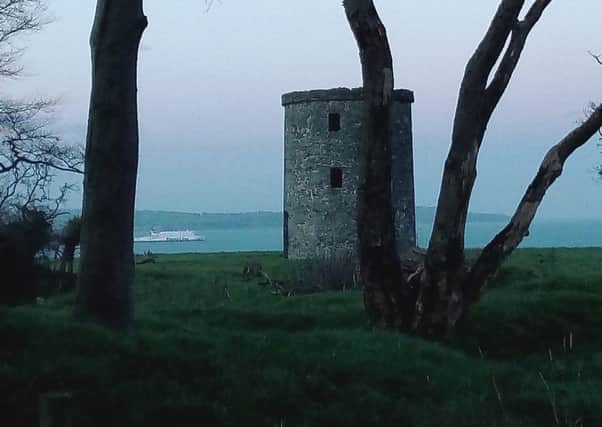Shortest day is a reminder that daylight returns, no matter how dark it gets


It looks out from Co Down across Belfast Lough towards the far north.
If you keep travelling 500 or so miles in that direction you reach the sort of latitude where the sun barely sets at this time of year (and it is a few hundred miles further still before you reach complete darkness).
Advertisement
Hide AdAdvertisement
Hide AdThe short winter days here in Northern Ireland, where it is properly daylight only from just before 9am to shortly after 3.30pm, can be atmospheric, particularly at Christmas. But I am one of those gloomy people who is happy to see them off.
There is, for example, something peculiarly depressing about a damp day in late November when it is so grey that it seems to be dark as early as 2pm or 3pm.
You might want to do something outdoors, in which daylight is needed to enable you can see what you are doing, but you find that you have missed your opportunity for another 18 hours.
And then, if you are like me, you think: oh no, there are months more of darkness like this ahead.
Advertisement
Hide AdAdvertisement
Hide AdNo wonder they celebrated the shortest day in ancient times, when there was no artificial light and when natural light was so important.
Some people seem not to be bothered whether or not light is natural or artificial. For me it is crucial.
When I was viewing a house to buy, I would always try to view it during the day and I would turn off any internal lights that the estate agent might have put on to brighten things up, so that I could see how much natural light got into the property.
In spirit, I am in solidarity with the fine people who built the passage tomb of Newgrange, near what is now Dundalk, more than 5,000 years ago (some 3,200 years before the birth of Christ).
Advertisement
Hide AdAdvertisement
Hide AdIn 2004 I reported from the inner chamber at Newgrange on December 22, just after the shortest day, where a group of us awaited sunrise.
The chamber is lit up if the sun does in fact rise, but that day it didn’t, causing disappointment to the people who had come from places such as South Africa. So many people want to visit Newgrange around the solstice that the small number of places is chosen by lottery.
Despite the fact that the sun did not show that morning it was a special, and almost haunting, experience – and a humbling one.
On only on four or five dawns on either side of the solstice does the sun rise at the right angle to shine down a shaft and light the chamber for up to 17 minutes.
Advertisement
Hide AdAdvertisement
Hide AdThe precision of the tomb was a stunning feat of engineering by the neolithic farmers who built it. Newgrange predates Stonehenge and the Pyramids.
We might think that the people who lived on this island back then were primitive, but contrast their Stone Age achievement with much of human activity today: drunkenness, celebrity worship and computer games.
Of course I jest about people now: there has always been drunkenness and today great things are achieved every second by brilliant people all round the world.
The quality of life of people who live in abject poverty is being steadily improved by technological advances and people in all societies are seeing their quality of life improve thanks to medicine.
Advertisement
Hide AdAdvertisement
Hide AdIt is this sense of progress that keeps me optimistic about the human spirit, even after such a tumultuous and uncertain year as the one that is now closing, in which there has been no shortage of unprecedented developments, many worrying.
December 21 ushers in a magical four-day period to Christmas Day. Church never played much part in my earlier life but increasingly I find events such as Midnight Mass at St George’s Anglican church in Belfast one of the key joys of Christmas.
The passing of the shortest day, meanwhile, is a metaphor for hope: no matter how dark, or darkening, things get, daylight always return. This week had fine sunny days, including Wednesday itself and Thursday.
By mid January, us daylight watchers will already be enjoying the small but significant extension in the length of the days, something that increases steadily for months until it reaches its glorious peak with the super long days of late May, June and early July.
Advertisement
Hide AdAdvertisement
Hide AdSome years ago a website asked Northern Ireland expats what things they missed most about the Province. One of the most cited parts of Ulster life that they remembered was those long days of June, that leave a deep imprint on our memories.
There are places in the world with even longer days, such as the north of Canada and Iceland, but not many. It is a distinctive NI thing – we get 40 minutes extra of daylight on June 21 than London.
And there is much else about here that brings Ulster people scurrying back at Christmas. In my experience almost everyone who leaves this place, even in exasperation, always keeps a place in their heart for it, wherever they end up.
• Ben Lowry (@BenLowry2) is News Letter deputy editor